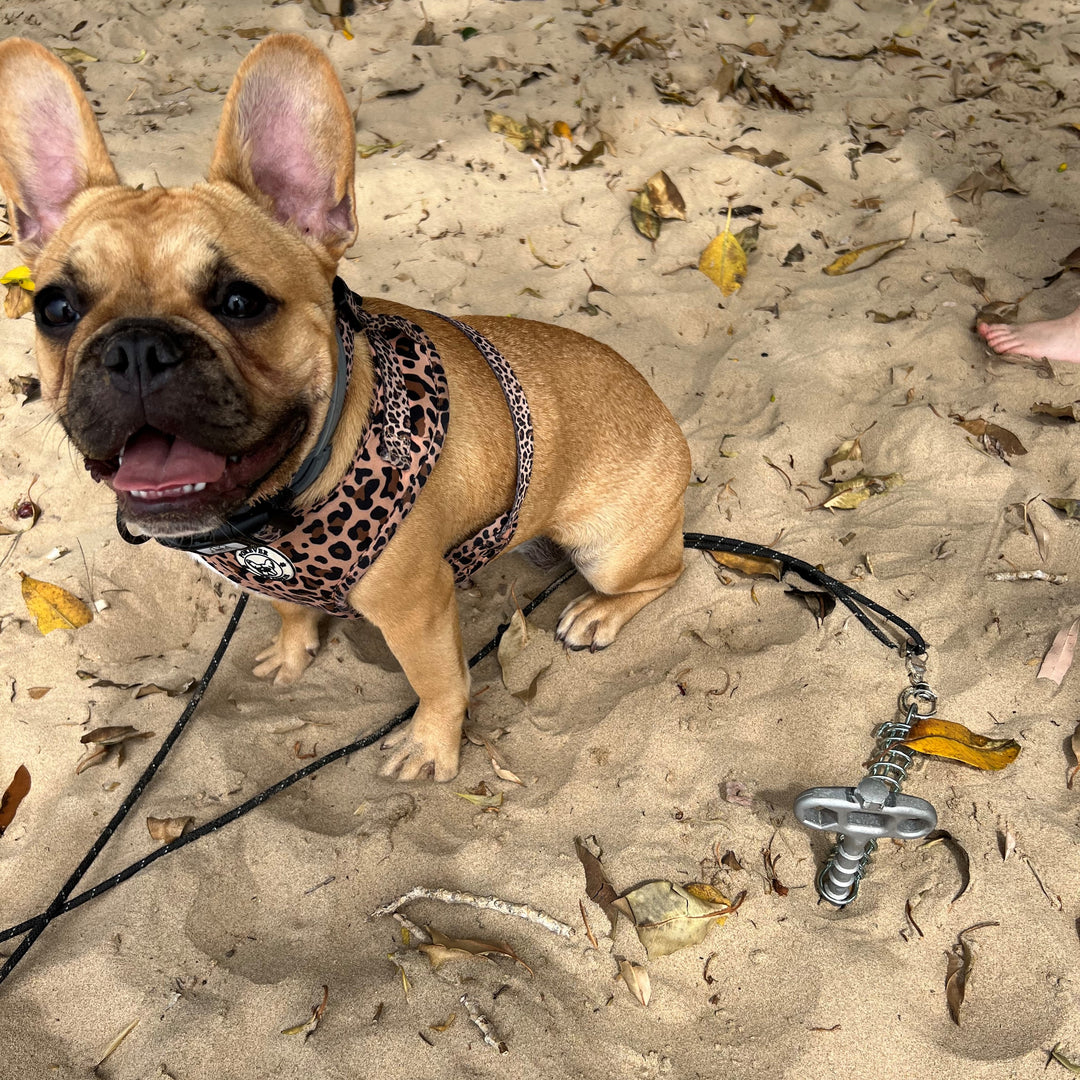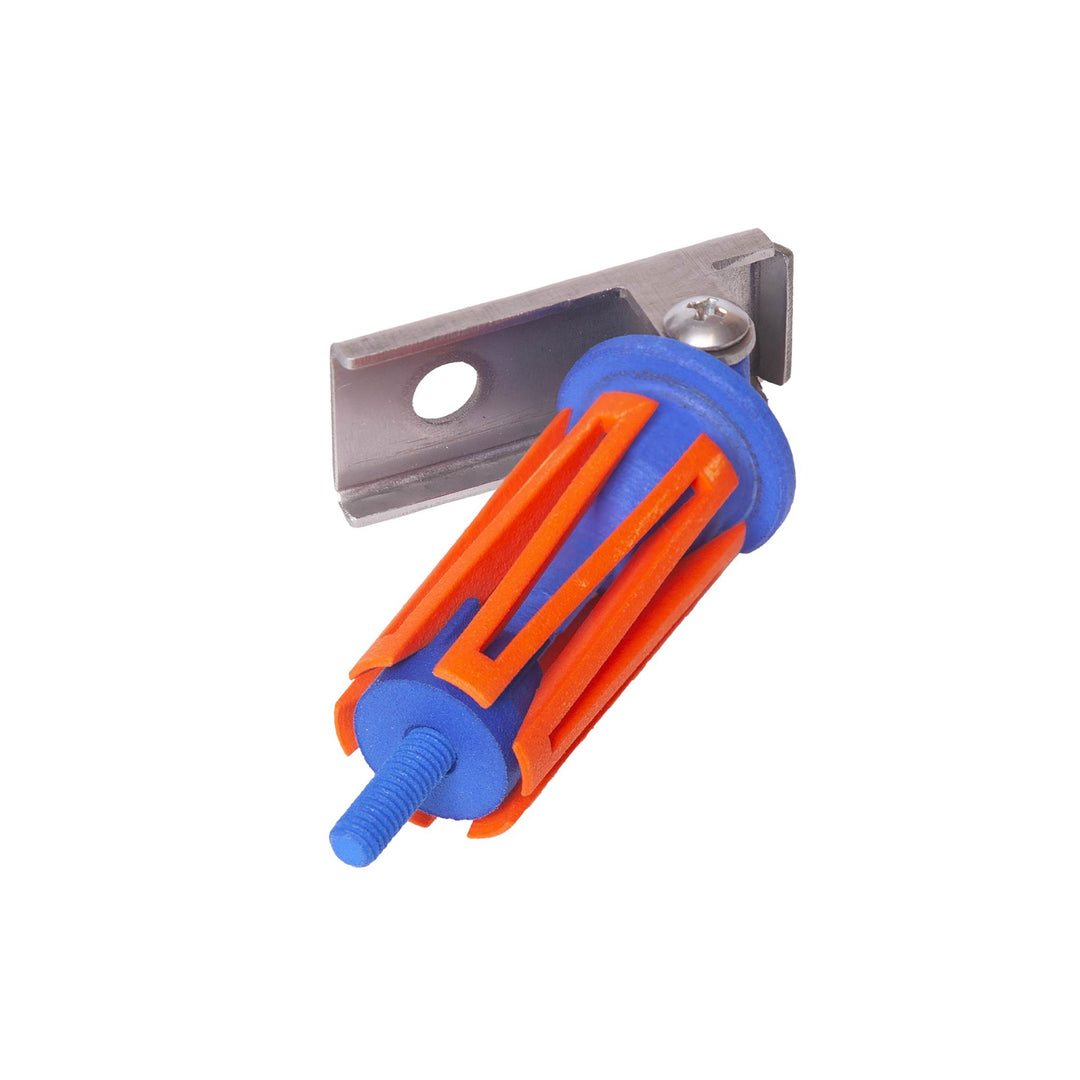Bestellungen
Versand
Belgien, Bulgarien, Dänemark, Deutschland, Estland, Finnland, Frankreich, Griechenland, Irland, Italien, Kroatien, Lettland, Litauen, Luxemburg, Malta, Niederlande, Österreich, Polen, Portugal, Rumänien, Schweden, Schweiz, Slowakei, Slowenien, Spanien, Tschechien, Ungarn, Zypern.
Kostenlosen Versand ab einem Bestellwert von 50 € innerhalb Deutschlands an.
Lieferungen in die Schweiz sind steuerfreie Ausfuhren und es muss beim Schweizer Zoll die Einfuhrumsatzsteuer bezahlt werden.
Im Normalfall 1-2 Werktage DE und 2-3 Werktage AT nach dem das Paket das Lager verlassen hat.
In andere Länder dauert es länger.
Bestellungen vor 12:00 sollten noch am selben Tag* versendet werden. Alles danach geht am nächsten Tag raus.
Samstag und Sonntag erfolgt kein Versand.
*Hier kann es vereinzelt zu Aussnahmen kommen
Bei vielen Einzel- und Großhändlern in der DACH Region. Vereinzelt auch an Campingplätzen.
Großhändler
- Frankana
- Movera
- Fritz Berger
- Reimo
- Camping Profi
Einzelhändler
- Weigl Nutzfahrzeuge - Langzenn
- Burmeistercaravancenter - Bodman-Ludwigshafen
Unsere Partner in Italien, Benelux, im Norder, England und Australien.
- Brunner - Italien
- Kama Fritid - Schweden
- Otoparts - Niederlande
- Obelink - Niederlande
- Rose Awnings - England
- Prima Leisure - England
- Lock Down Fixing - Australia
Bist du ein Einzelhänler und möchtest hier genannt werden? Dann schreibe uns doch gerne.
Retouren und Umtausch
Sie können Ihre Vertragserklärung innerhalb von2 Wochenohne Angabe von Gründen in Textform (z. B. Brief, Fax, E-Mail) oder durch Rücksendung der Sache widerrufen. Die Frist beginnt frühestens mit Erhalt dieser Belehrung. Zur Wahrung der Widerrufsfrist genügt die rechtzeitige Absendung des Widerrufs oder der Sache.
Falls Sie Ihren Kauf zurückgeben möchten, kontaktieren Sie uns bitte über die folgende E-Mail service@peggypeg.com
Bei einer Rücksendung aus einer Warenlieferung, deren Bestellwert insgesamt bis zu 40 Euro beträgt, haben Sie die Kosten der Rücksendung zu tragen, wenn die gelieferte Ware der bestellten entspricht. Anderenfalls ist die Rücksendung für Sie kostenfrei.
Die Retoure ist an folgende Lieferadresse zu richten:
Viking Logistics GmbH
c/o Achim Reinhold
Krugbäckerstrasse 15
Einfahrt Tor B
56424 Mogendorf
Bei kostenfreier Rücksendung wird unser Service Team ihnen direkt per DHL E-Mail ein Rücksendelabel zukommen lassen.
Natürlich können Sie die Produkte zurücksenden. Für den Umtausch erhalten Sie in einer separaten E-Mail ein Rücksendelabel von uns.
Bitte beachten Sie, dass wir in diesem Fall keinen klassischen Umtausch anbieten können. Sobald die Ware bei uns eingetroffen ist, erstatten wir Ihnen den Kaufbetrag für das zurückgesandte Produkt.
Sie können das gewünschte Produkt anschließend oder auch sofort in unserem Online-Shop neu bestellen, ganz wie es Ihnen am besten passt.
Garantie
Sollte irgendwas mit dem Produkt nicht stimmen kontaktieren Sie uns bitte unter service@peggypeg.com und schildern Sie den Fall.
Falls möglich senden Sie uns bitte auch Bilder zu.
Wir werden Ihren Fall analysieren, gezielte Tipps geben und Ihnen ggfs. auch Ersatz anbieten.
Gutscheine
Bei unseren Gutscheinen wird zwischen Groß- und Kleinschreibung unterschieden. Achten Sie darauf, den genauen Wortlaut und zusätzliche Zeichen zu kopieren, wenn Sie den Rabattcode anwenden.
Rabattcodes sind nicht kombinierbar und nicht auf Neuware anwendbar.
Sie möchten jemanden mit einem unserer Peggy Peg Produkte eine Freude bereiten, wissen aber nicht, was derjenige nötig hat?
Kein Problem, wir bieten jetzt auch Geschenkgutscheine für unseren Shop an.
Reiter: Peggy Peg Shop - Gutscheine
Fragen zu Ankerplatten
Der Sturmhaken kann von unten nach oben durch eines der vier quadratischen Löcher in der Ankerplatte eingeführt werden. Nach dem Einsetzen können Abspannleinen oder Sturmbänder angebracht werden. Diese können entweder direkt nach unten befestigt werden, um die Stolpergefahr zu minimieren, oder in einem 45°-Winkel, wenn es der Platz erlaubt.
Die Ankerplatte 2.0 PP16 ist für Kastenmarkisen von Marken wie Fiamma, Thule und Dometic konzipiert, kann aber auch für Awnlux-Markisen angepasst werden.
Normale/Gras-Bedingungen:
Wir empfehlen die Verwendung von Peg&Stop-Schrauben, insbesondere PP01 oder PP04 für weichere oder feuchtere Bedingungen. Für eine optimale Stabilität verwenden Sie drei Heringe pro Platte, die in einer Dreiecksform angeordnet sind: ein Hering in der Mitte und zwei Heringe auf der gegenüberliegenden Seite in den äußeren Löchern.
Steine oder schwierige Bedingungen:
Für felsiges oder schwieriges Gelände verwenden Sie die HP61 oder HP60 Schraubheringe. Optimale Ergebnisse erzielen Sie, wenn Sie die HP61-Heringe in den Boden einschlagen. Die HP60-Zapfen können mit einem Schlagschrauber installiert werden. Unter diesen Bedingungen empfehlen wir, zwei Heringe pro Platte zu verwenden und sie diagonal in die äußeren Löcher zu setzen.
Sand / Strand:
Für die Befestigung von Platten am Strand empfehlen wir die Verwendung von vier Heringen pro Platte. Erwägen Sie die Verwendung unserer langen PP12- oder langen PP13-Aluminiumheringe in Kombination mit den PP04- oder PP01-Schrauben.
Bestimmen Sie zunächst, wo das Markisenbein platziert werden soll und markieren Sie die Mitte des offenen Lochs mit dem L- oder LA-Zapfen. Entfernen Sie vorübergehend die Platte und schrauben Sie dann den Dübel ein. Wenn der Sand sehr fein ist, entfernen Sie die oberste Sandschicht, um einen besseren Halt zu gewährleisten, bevor Sie den Zapfen einführen.
Sobald der Dübel eingesetzt ist, befestigen Sie die Platte mit Hilfe des offenen Lochs wieder. Verwenden Sie für die anderen drei Löcher entweder die PP04- oder die PP01-Schrauben, so dass insgesamt vier Dübel pro Platte vorhanden sind.
Obwohl nicht direkt kompatibel, haben wir einen nützlichen Adapter entwickelt: den Fix&Go Adapter! Mit dem Fix&Go Adapter können Sie die gängigsten Stangen in die Anchor Plate 2.0 einbauen
Die gängigsten Markisenhersteller: Fiamma, Thule & Omnistor passen höchstwahrscheinlich in unsere Fix&Go-Ankerplatte. Leider gibt es einige Ausnahmen. Wenn Sie unsicher sind, kontaktieren Sie uns bitte über service@peggypeg.com und wir werden Ihnen so schnell wie möglich antworten.
TBA
Fragen zum Tie-Strap und zum Sturmgurt
1. Stecken Sie das blaue T-Verbindungsstück in Ihre Markisenschiene
2. Klicken Sie auf den Gurt und verdrehen Sie den Gurt, um die
Brummen und Flattern im Wind
3. Schrauben Sie direkt durch die Öse mit dem passenden Peggy-Schraubzapfen für den Boden
4. Wenn es nicht ganz reingeht, einfach den Haken oben auf die Federöse klicken, um es in der untersten Position zu halten
Drehen Sie den Gurt einfach ein paar Mal, bevor Sie ihn am Boden befestigen.
Ausziehbar von 1,5-3m
Am wichtigsten ist es, die Schraube durch die Öse des Tie-strap 2.0 zu stecken. So entsteht ein geschlossenes System, das sich nicht selbst lösen kann. Hier finden Sie eine ausführliche Erklärung, welcher Dübel für welchen Bodentyp zu verwenden ist!
Die Krawattenschlaufe kann auf drei verschiedene Arten verwendet werden:
1. Schieben Sie den T-Verbinder in den Keder oder die Markisenschiene.
2. Nutzen Sie das Loch im T-Verbinder, indem Sie einen Dorn oder Stift durchstecken und ihn dann nach unten schnallen.
3. Wir bieten ein praktisches Zubehör namens U-Verbinder an, mit dem Sie den Tie-strap 2.0 mit einem Crocodile Peggy verbinden können. Öffnen Sie einfach den Hebel des Crocodile und klemmen Sie es an den Stoff Ihrer Markise oder an ein Band der Markise.
Fragen zu unseren Pegs
Normale Bedingungen / Gras:
- Für Zelte, Fallen und Bodenplatten empfehlen wir die Verwendung unserer PP05- oder PP02-Schrauben.
- Wenn Sie unsere Ankerplatten verwenden, empfehlen wir die Schrauben PP01, PP04 oder HP60.
Für sandige Bedingungen:
- Unsere langen Schrauben oder langen Aluminiumstifte eignen sich gut für sandige Bedingungen. Optimale Ergebnisse erzielen Sie, wenn Sie eine Handvoll des trockenen, losen Sandes von der Oberfläche schaufeln und ihn in den festeren, gut verdichteten, leicht feuchten Untergrund einarbeiten.
- In festerem und verdichtetem Sand können auch die PP02- und PP04-Schrauben funktionieren, aber bitte testen Sie sie, um ihre Wirksamkeit sicherzustellen.
Für felsige oder schwierige Bedingungen:
- Wir empfehlen die Verwendung der HP61- oder HP60-Schrauben.
- Die besten Ergebnisse erzielen Sie, wenn Sie die HP61-Schrauben in den Boden einhämmern und sie anschließend einfach herausdrehen.
- Die HP60 ist für die sichere Verwendung mit einem Schlagschrauber konzipiert. In diesem Fall treiben Sie sie einfach so weit wie möglich in den Boden.
- Wenn Sie in felsigem Gelände lieber unsere regulären Heringe verwenden möchten, bohren Sie bitte zuerst ein Vorbohrloch und verwenden Sie unser höhenverstellbares System, falls die Heringe vorne stehen bleiben.
Alle Peggy Pegs haben einen 17mm Sechskantkopf. Dazu gehören die PP05 Small Peg, PP02 Standard Peg, PP12 Large Plastic Peg, PP13 Large Aluminium Peg, HP61 Hardcore Pegs (Hammer in Schraube aus).
Unsere Heringe sind aus glasfaserverstärktem Polyamid, Aluminium oder rostfreiem Stahl in Marinequalität gefertigt.
Die Materialien haben gemeinsam, dass sie extrem leicht, aber auch stabil sind.
Jeder Camper muss heutzutage über seine maximale Belastung nachdenken. Unser Starterkit wiegt nur 1,3KG, ein riesiger Unterschied im Vergleich zu normalen Zeltheringssets, die oft um die 5-10kg wiegen.
Unsere Pflöcke müssen nicht vollständig in den Boden geschraubt werden, da sie höhenverstellbar sind. Sobald Sie spüren, dass der Hering den Boden zu greifen beginnt, können Sie aufhören, ihn weiter einzuschrauben. An diesem Punkt können Sie entweder den Haken an der tiefsten Stelle des Pflocks einhängen oder die Kontermutter anziehen, um die Ankerplatte zu sichern.
Jedes Werkzeug mit einem 17-mm-Sechskantkopf kann zum Ein- und Ausschrauben der Zapfen verwendet werden. Einige Wohnwagenstabilisatoren verwenden einen 17-mm-Sechskantkopf, andere nicht, daher ist es wichtig, dass Sie Ihre spezifische Konfiguration überprüfen. Alternativ können Sie sich auch für unser Combitool HP68 entscheiden, das Sie entweder von Hand oder mit einer Akkubohrmaschine verwenden können.
Wir empfehlen, für unsere normalen Dübel (PP01, PP02, PP04, PP05) keine Schlagschrauber zu verwenden, da sich das Drehmoment nur begrenzt einstellen und reduzieren lässt.
Unsere hochbelastbaren HP60-Schrauben können jedoch sicher mit Schlagschraubern verwendet werden.
Der kleine Peggy Peg (PP05) ist in erster Linie für die Befestigung von Bodenmatten, Bodenplatten oder Schmutzfängern gedacht. Bei schwierigen Bedingungen bohren Sie bitte ein Vorbohrloch mit einem 6-mm-Steinbohrer vor, den Sie ebenfalls im Starterkit finden
Bei der Entwicklung unserer Heringe wollten wir unbedingt sicherstellen, dass sie leicht sind und besser halten als normale Heringe/Schrauben. Wir haben festgestellt, dass das Gewinde der Heringe für den Grip und den Halt im Boden wichtiger ist als das maximale Drehmoment, mit dem sie angezogen und eingeschlagen werden. Daher empfehlen wir, die Drehmomentangaben unserer Heringe nicht zu überschreiten.
Das maximale Drehmoment ist auch auf der Verpackung angegeben. Wenn Sie zu viel Kraft (Drehmoment) aufwenden, besteht die Gefahr, dass der Zapfen abreißt.
N = 25Nm
L = 30Nm
LA = 70Nm
HC = 70Nm
S = 5Nm
Unsere Hardcore Pegs sind speziell für extrem harte und trockene Bodenverhältnisse konzipiert. Sie verfügen über ein völlig anderes Gewinde im Vergleich zu unseren anderen Schraubpflöcken. Die Hardcore Pegs (HP61) sind dafür gedacht, eingeschlagen und herausgeschraubt zu werden. Im Gegensatz zu anderen Heringen, die ein schneidendes und komprimierendes Gewinde haben, ist das Gewinde der Hardcore Pegs speziell für felsige Bedingungen konzipiert, bei denen ein Schneiden oder Komprimieren des Bodens nicht möglich ist.
Daher kann es sein, dass die Hardcore Pegs HP61 in hartem Boden nicht so gut halten wie andere Schrauben in Gras.
Bitte beachten Sie außerdem, dass Sie sie möglicherweise durch unsere normalen PP02 Heringe ersetzen müssen, wenn der Boden durch starken Regen überflutet wurde. Wenn Sie Ihre Ausrüstung an den Hardcore Pegs HP61 befestigen, wenn der Boden trocken ist, und dann der Boden durch Regen gelockert wird, kann es sein, dass die Hardcore Pegs nicht mehr so gut greifen und halten. Deshalb ist es wichtig, die Stabilität nach starkem Regen zu überprüfen.
Wir bieten zwei verschiedene Größen von Haken und zwei Arten von Sicherungsmuttern an:
- Der kleinere Haken ist für die Verwendung mit dem normalen PP02 Peg bestimmt.
- Der größere Haken ist kompatibel mit unserem Large PP12, Large Aluminium PP13 und Hardcore Peggy HP61.
Zu den Sicherungsmuttern: Beide Typen passen auf alle Peg&Stop-Schrauben. Die schweren HP60-Schrauben werden mit der neueren Kontermutter 2.0 geliefert, die die Funktionen von Haken und Kontermutter kombiniert.
1. Gehen Sie mit Ihrem Hund oder Ihrer Katze spazieren oder zelten und suchen Sie einen
schönen Platz
2. Legen Sie die Feder auf den Boden und schrauben Sie den PetPeg
durch die Feder
3. Nur so weit schrauben, wie der PetPeg nach vorne reicht. Sobald der
Schraubenzapfen greift, können Sie aufhören zu schrauben, das Gewinde hat sich durch sein
durch sein schneidendes und komprimierendes Gewinde in den Boden. Der PetPeg muss nicht
ganz in den Boden geschraubt werden, da wir hier mit unserer Höhenverstellung arbeiten.
Höhenverstellung arbeiten.
4. Hängen Sie nun den Karabinerhaken an die Leine Ihres Hundes oder Ihrer Katze
und genießen Sie die Ruhe an Ihrem Zielort
Die orangenen „Muttern“ sind sogenannte Kontermuttern 2.0, eine Weiterentwicklung aus dem Peg&Stop-System von Peggy Peg. Sie erfüllen mehrere wichtige Funktionen und verbessern die Handhabung und Vielseitigkeit der Schraubheringe – insbesondere dann, wenn diese nicht vollständig in den Boden eingeschraubt werden können.
Hauptfunktionen:
- Fixierung des Schraubherings bei unvollständigem Einschrauben:
Wenn der Schraubhering beispielsweise auf einen Stein oder eine harte Schicht trifft und nicht ganz im Boden versenkt werden kann, sorgt die Kontermutter dafür, dass der Hering dennoch stabil bleibt. Statt weiterzuschrauben, dreht man einfach die orangefarbene Mutter im Uhrzeigersinn nach unten, bis sie fest auf dem Untergrund, einer Matte oder einer Ankerplatte aufliegt. So entsteht ein sicherer Gegendruck, der den Hering zuverlässig fixiert. - Höhenverstellbare Spannposition für Seile und Leinen:
Die Kontermutter 2.0 besitzt sechs Haken, die in verschiedenen Positionen verwendet werden können, um Abspannseile, Zelt- oder Pavillonleinen einzuhängen. Durch diese Haken kann der Hering individuell an die ideale Höhe angepasst werden – auch wenn er nicht ganz eingeschraubt ist. Dies verringert die Hebelwirkung, die bei falsch positionierten Haken auftreten kann, und schützt so vor dem Lockern des Herings durch Zugbelastung. - Mehr Flexibilität bei verschiedenen Untergründen:
Durch die Kontermutter ist es nicht mehr nötig, den Schraubhering komplett einzudrehen. Gerade auf schwierigen Untergründen wie hartem, steinigem oder unebenem Boden ist das ein großer Vorteil. Die Mutter gleicht die Einschraubtiefe aus und sorgt für eine stabile Verbindung zur Zeltabspannung oder Bodenbefestigung.
Fragen zum SunBreak
Das Gewicht des SunBreaks mit Tasche beträgt, 2,85kg
Ja, bei Tag kann man durch das schwarze SunBreak besser rausschauen, und wenn es dunkel ist durch das Weiße
Das SunBreak-Modul ist nicht für den Einsatz an der Seitenwand der Markise vorgesehen, sondern ausschließlich für die Frontseite konzipiert.
Eine leichte Schräge beim Einsatz vorne ist grundsätzlich unproblematisch. An der Seite jedoch ist die Neigung in der Regel deutlich zu groß, sodass das Modul dort nicht richtig funktioniert und nicht die gewünschte Stabilität bietet.
In unserer nächsten Produktionscharge wird der Keder des SunBreaks angepasst, sodass er auch mit WIGO-Markisen kompatibel ist.
Diese neue Version wird allerdings erst im Herbst verfügbar sein.
Modulbreite: 1,10m
Bahnbreite: 1,06m
Ja das SunBreak passt für die Fiamma Markise.
Fragen zum Crocodile PEGGY®
Crocodile: One Product - Endless Possibilities
Für die Fixierung des Teppichs:
1. öffnen Sie den Hebel und drehen Sie ihn gegen den Uhrzeigersinn, um ihn zu lösen.
2. legen Sie das Teppichmaterial in der gewünschten Position zwischen die beiden Platten.
3. Drehen Sie den Hebel ein paar Mal (es ist nicht nötig, zu oft zu drehen, da der Druck zunimmt, sobald er eingerastet ist).
4. verwenden Sie den für die Bodenverhältnisse geeigneten Peggy-Schraubenzapfen, um den Teppich zu befestigen.
**Zum Aufhängen an einer Segelschiene** (Croc-Adapter erforderlich):
1. schieben Sie den Croc-Adapter in die Segelschiene.
2. Hängen Sie das Crocodile in den Croc-Adapter ein, bis es einrastet.
3. Sie können nun Gegenstände zum Trocknen aufhängen oder mit einem größeren Handtuch oder Stoff schnell Schatten spenden.
Das Crocodile kann auch mit dem Tie-strap 2.0 verbunden werden, indem Sie unseren U-Verbinder verwenden. Dieses System kann unter anderem für eine Plane, Ihren Pavillon oder eine 270°-Markise verwendet werden.
* U-Connector erforderlich
Lösen Sie zunächst den T-Verbinder und ersetzen Sie ihn durch unseren U-Verbinder. Als Nächstes befestigen Sie eine Krokodilklemme, und schon sind Sie fertig! Jetzt können Sie die Krokodilklemme wie vorgesehen verwenden - klemmen Sie sie einfach an den gewünschten Ankerpunkt oder das Material. Dieses System eignet sich perfekt für die Herstellung von Sonnenschirmen, Sturmbändern oder zur Sicherung von Planen bei stürmischen Bedingungen.
Der Crocodile Peg ist aus verstärktem, UV-beständigem Kunststoff gefertigt und weist keine scharfen Kanten auf. Die Zähne des Clips sind abgerundet, was für Sicherheit sorgt und scharfe oder zackige Stellen verhindert.
Was diese Klammern so sicher macht, ist der einstellbare Backendruck, der es Ihnen ermöglicht, sie je nach Material und Bedingungen anzupassen. Diese Anpassungsfähigkeit hilft, mögliche Schäden zu minimieren.
**Für die Aufhängung an einer Segelschiene** (Croc-Adapter erforderlich):
1. Schieben Sie den Croc-Adapter in die Segelschiene.
2. Haken Sie das Krokodil in den Knopf des Croc-Adapters ein, bis es einrastet.
3. Sie können nun Gegenstände zum Trocknen aufhängen oder mit einem größeren Handtuch oder Stoff schnell Schatten spenden.
Fragen zum PetPeg
Laut unserer Produktbeschreibung ist der PetPeg (HP62) Bodenanker mit Stoßdämpfer für Haustiere bis zu 20 kg ausgelegt. Der PetPeg wiegt 521 g.
Unser neuer PetPeg 2.0 (HP63) ist aus rostfreiem Edelstahl gefertigt und für Hunde bis zu 45 kg geeignet. Mit 865 g ist er deutlich schwerer.
Fragen zum Anti Flap
Um unsere Anti-Flap zu verwenden, benötigen Sie Sparrenstangen an beiden Enden Ihrer Markise, um das Gewicht der Anti-Flap zu tragen und zusätzlichen Halt zu bieten. Bitte befolgen Sie diese Schritte:
1. **Sparrenstangen** auf der rechten und linken Seite der Markise anbringen.
2. **Klemmen Sie das Markisentuch** zwischen die Kissen der Anti-Flap.
3. **Drehen Sie den Hebel** ein paar Mal und arretieren Sie ihn, um das Markisentuch zu sichern.
4. **Wickeln Sie die Silikonbänder** um die Dachsparrenstange, um sie in Position zu halten. Es muss nicht sehr fest sitzen! Das erste oder zweite Loch ist ausreichend.
5. Wenn Sie Seitenwände haben, stecken Sie statt der Silikonbänder das T-Verbindungsstück des Spanngurtes in die Segelschiene des Anti-Flap und befestigen Sie es mit dem Gurt am Boden.
Wenn Sie diese Schritte befolgen, können Sie die ordnungsgemäße Installation und Funktion der Anti-Flap sicherstellen.
In diesem Fall haben wir das Produkt so entwickelt, dass es mit unserem Tie-Strap kompatibel ist, den Sie bei geöffnetem Hebel in die Reling der Anti-Klappe schieben können. Wenn der Hebel geschlossen ist, wird der T-Verbinder gesichert und daran gehindert, sich aus der Schiene zu bewegen.
Um die Anti Flap verwenden und anbringen zu können, müssen Sie die zusätzlichen Sparrenstangen von Ihrem Markisenhersteller erwerben. Ihre Markise wird bereits mit einer der Stangen geliefert, um die Mitte des Markisentuchs zu stützen.
Fragen zum Fix&Go-Adapter 'Puffer'
Der Fix&Go-Adapter ist mit Stöcken mit einem Innendurchmesser von 18 bis 27 mm kompatibel.
Obwohl wir noch offizielle Festigkeitstests durchführen müssen, haben wir bereits einige beeindruckende Ergebnisse sowohl mit der 3D-gedruckten Version als auch, mehr noch, mit dem Endprodukt gesehen! Wenn sie richtig verbunden sind, konnten wir sie nicht auseinanderziehen, selbst wenn zwei Erwachsene volle Kraft aufwandten!
Die Ankerplatte 2.0 PP16
Allgemeine Fragen
- Verwenden Sie diesen wiederverwendbaren Kabelbinder, um Kabel und Schläuche zu sichern, Lampen aufzuhängen, Müllsäcke zu befestigen und vieles mehr.
- Er kann bei Bedarf auch als Ersatzband für den Fix&Go AntiFlap verwendet werden. Zur Verwendung stellen Sie den Binder einfach auf die gewünschte Größe ein und drücken den Knopf durch das Loch.
1. Messen Sie die erforderlichen Maße für Ihren Schrank, Kühlschrank, Ihr Bad usw.
2. Drehen Sie die Teleskopstange, um sie aus- oder einzufahren. Stellen Sie sie so ein, dass sie gut in Ihren Schrank oder Kühlschrank passt.
3. Verwenden Sie die Stange, um zu verhindern, dass Gegenstände aus Ihrem Schrank oder Kühlschrank fallen. Sie können sie auch zum Aufhängen von Handtüchern verwenden.
1. Stellen Sie den Toaster auf den Herdrost und schalten Sie die Flamme ein (Vorsicht: das Metall wird heiß - nicht anfassen).
2. Legen Sie Toast oder Brötchen darauf und rösten Sie sie.
3. Achten Sie darauf, sie regelmäßig zu wenden.
Zunächst einmal möchten wir uns bei all unseren Kunden herzlich bedanken! Dieses Dankesschreiben dient nicht nur unserer Wertschätzung.
Sie können uns natürlich auf den sozialen Medien folgen, um über unsere Aktivitäten auf dem Laufenden zu bleiben, aber wir möchten Sie auch darauf hinweisen, dass sich auf der Rückseite dieses Schreibens ein praktisches Peggy-ABC befindet. Es enthält nützliche Tipps für die optimale Verwendung unserer Produkte.
Bei extrem hartem, gefrorenem Boden oder auf Schotter ist es sinnvoll, ein Loch vorzubohren. In dieses Kernloch kann ein Peggy mit dem Handschrauber oder der Akkubohrmaschine leicht eingeschraubt werden.
Auf den Messen versuchen wir immer gute Angebote für unsere Kunden anzubieten. Das Jumbo Set Markise gibt es ausschließlich beim Hersteller zu kaufen und sonst nirgendwo. Mit dem Set haben Sie einen eindeutigen Preisvorteil basierend auf einem wesentlich größeren Inhalt.
Um zu ganz genau zu wissen was die jeweiligen Sets unterscheidet klicken Sie bitte hier.
Das ist eine Schutzkappe für Ihre Anhängerkupplung (am Womo oder PKW) und ein kleines Dankeschön für Ihren Einkauf bei uns im Shop.
Diese können Sie gerne bei Ihrem Fahrzeug anbringen oder wahlweise auch verschenken.
Ja! Sie müssen nur einige Dinge beachten. Generell ist es die gleiche Anwendung wie im Kies/Steinbereich. Vorbohren ist Pflicht! Notfalls auch mit einem Schlagbohrer. Das Kunststoffmaterial, aus dem die Peggy's hergestellt sind, enthält eine kleine Menge Wasser, das bei Minustemperaturen gefriert. Dadurch wird der Peggy spröde und kann leichter brechen. Wir empfehlen Ihnen daher, sie vor dem Einschrauben in den gefrorenen Boden in heißes Wasser zu geben. Das gibt mehr Elastizität und hilft auch, bevor man die Peggy Pegs wieder herausschraubt.
Haben Sie noch eine Frage?
Kontaktieren Sie uns für Ihre Anfragen mit dem untenstehenden Formular




